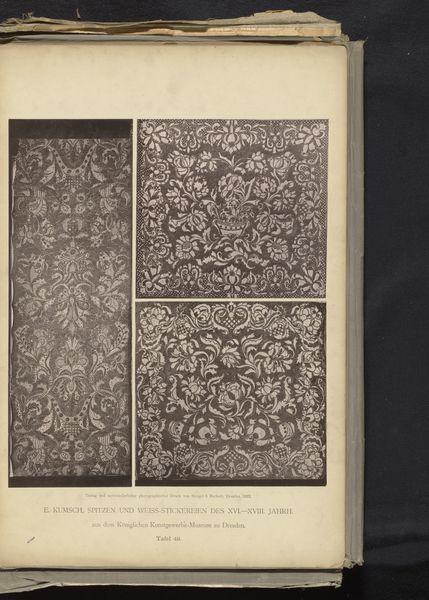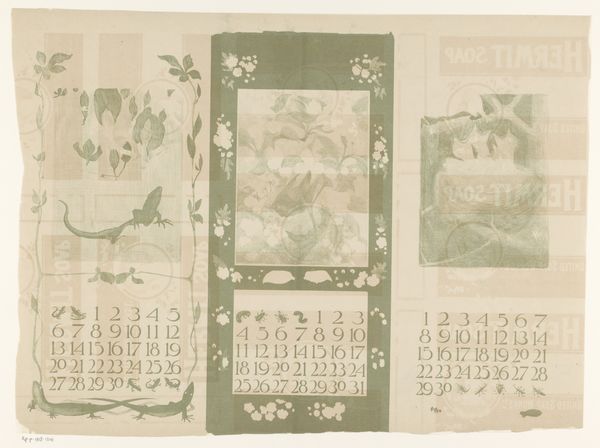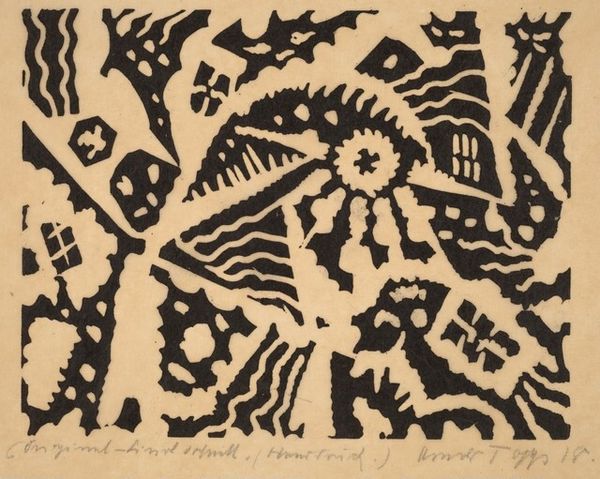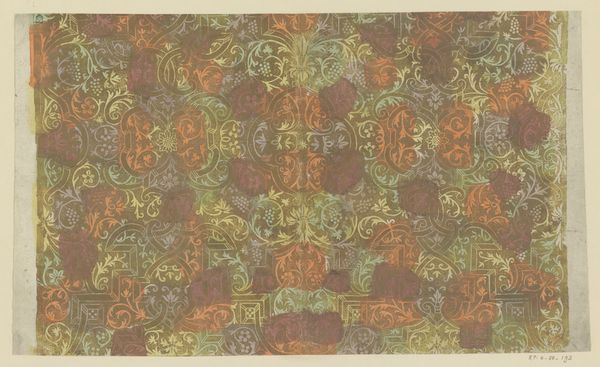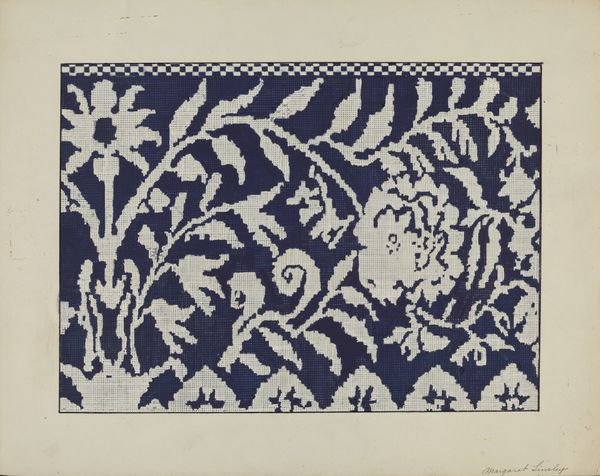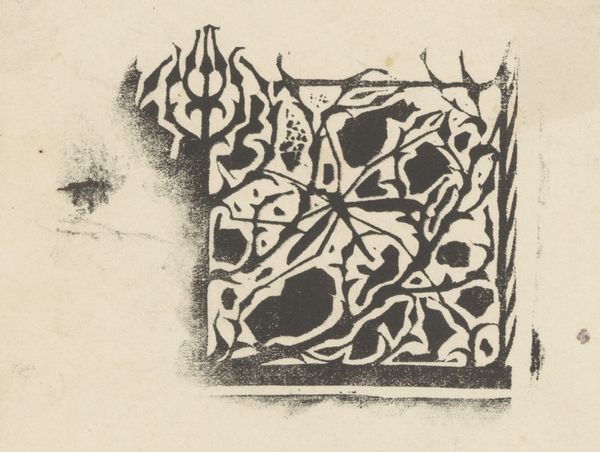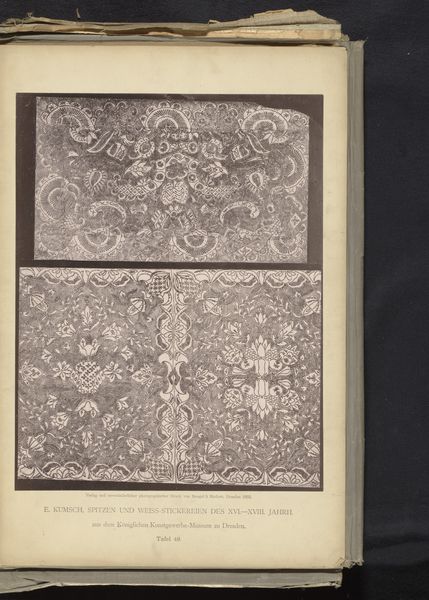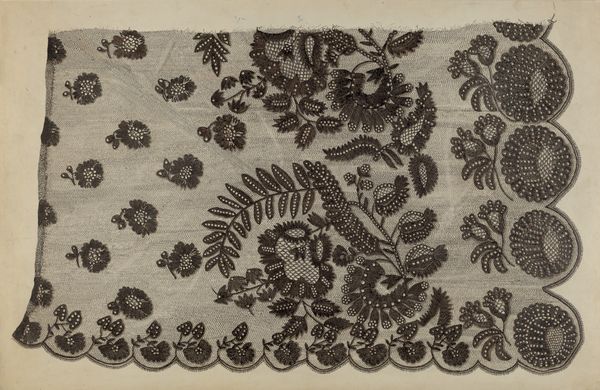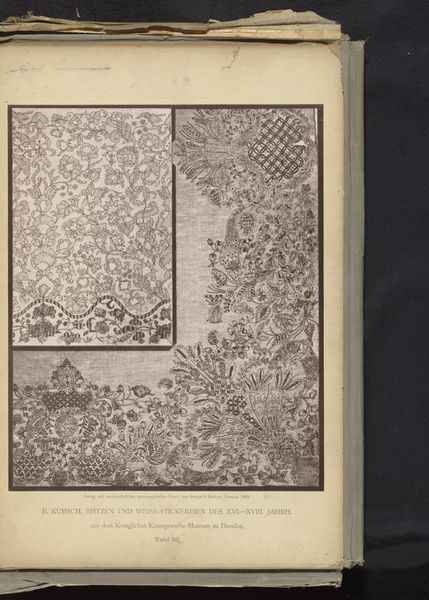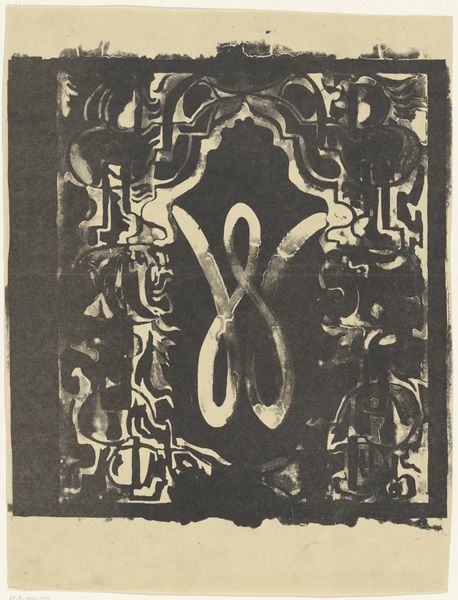
Verschillende uitprobeersels voor ontwerpen voor Reinaert de Vos c. 1910
0:00
0:00
graphic-art, print, linocut, woodcut
#
graphic-art
#
art-nouveau
# print
#
linocut
#
figuration
#
linocut print
#
geometric
#
woodcut
#
symbolism
Dimensions: height 247 mm, width 330 mm
Copyright: Rijks Museum: Open Domain
Curator: This is a fascinating piece, isn't it? Wierink's "Verschillende uitprobeersels voor ontwerpen voor Reinaert de Vos," dating around 1910. It’s a woodcut or linocut print. What catches your eye about it? Editor: It feels almost like a storyboard or a page of thumbnails. There’s this collection of fox images, foliage, and letter "R", all these visual elements jumbled together on the paper. How do you interpret this work, considering its historical and social context? Curator: Well, given that Wierink was working around 1910, it's vital to look at the rise of popular culture and the increasing accessibility of art through prints. The subject, "Reinaert de Vos" which translates to "Reynard the Fox", is taken from a medieval cycle of allegorical Dutch, German, and French fables, is a significant clue. Why do you think Wierink would choose Reynard the Fox, a known trickster? Editor: I'd guess because Reynard the Fox satirizes authority, so perhaps it resonates with an audience keen on questioning established social structures. And the Art Nouveau style maybe underscores this shift towards simpler, more accessible art forms? Curator: Precisely! The art nouveau influence, characterized by organic forms and decorative patterns, sought to democratize art. But who would be the consumers of such artwork at that time? Editor: Presumably, the rising middle class? People looking for affordable art with social commentary. Also, these fable-like imagery seem pretty playful, making it appealing. Curator: Exactly. Printmaking allowed artists like Wierink to engage in social discourse and distribute political ideas through seemingly benign or entertaining narratives. It reflects art functioning within a very specific socio-political moment, where artists are responding to increasing social consciousness. Editor: So it is not just aesthetic explorations, but reflects the power of imagery in cultural conversation at the time. It definitely gives a new perspective on the interplay between artistic exploration, printing, and its engagement with socio-political landscape.
Comments
No comments
Be the first to comment and join the conversation on the ultimate creative platform.
